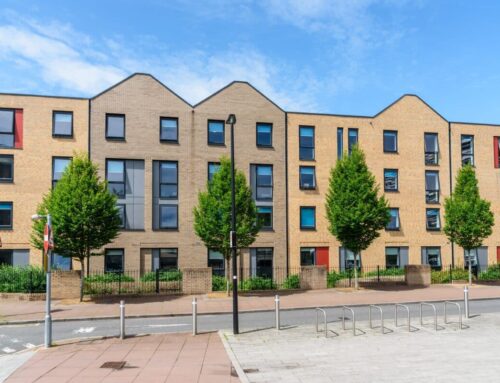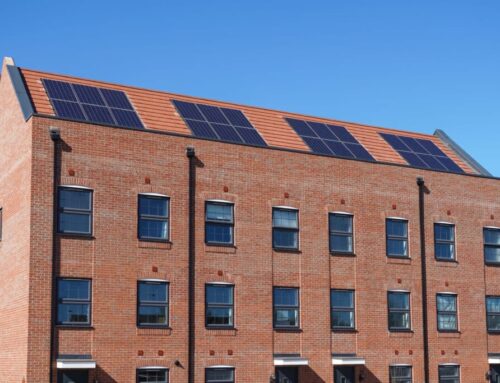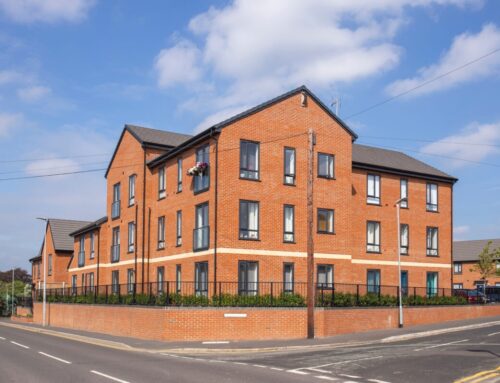Darren Bagnall from Block in a Box advises that RMCs must “take all reasonable precautions to prevent or minimise loss, destruction, damage, accident or injury and maintain the premises, machinery, equipment to a good state of repair”.
Things to consider:
- Insurance claims can be rejected and cover can be reduced or even removed if properties are poorly maintained.
- Insurance surveys will comment on the general state of the building and may also suggest which areas of maintenance need to be completed. Some insurers may remove or reduce cover until such works are finished.
- If there are any flat roof areas to the property and the original coverings (or any replacement materials) are over 10 years old, then your insurer may ask for a report to be produced. This report should confirm the condition of the flat roof area as well as any repairs that may be required once it has passed its guarantee period.
- When you start or renew your insurance policy, most ‘Statement of Fact’ documents will ask you to state that your property is, and will be, maintained in a good state of repair. If you answer incorrectly then claims could be rejected.
It may be convenient to overlook any maintenance issues, even for a short period of time, but what would happen if you experienced a major loss? You should remember this when making a claim; Loss Adjusters will have to pass comment on the general condition of your property and whether they believe the property to be adequately maintained.
Also, if a property is in a poor condition and somebody is injured due to a decision made by the RMC, this could give rise to a personal claim against the RMC.
On a positive note, significant discounts can be secured from insurers where you can prove that maintenance has been completed e.g. ground maintenance, IEE (Institute of Electrical Engineering) tests, Fire Risk Assessments etc.
What Are a Residents’ Management Company’s Responsibilities?
There is not an exhaustive list of exactly what an RMC must legally do and what the leaseholder’s responsibility is, but there are some basics to follow.
You should always err on the side of safety and try to go above and beyond the bare minimum of legal requirements. If anything should happen to either the property or your occupants, you need to be able to prove that you have been diligent and taken reasonable steps to keep both safe and secure.
Here are some areas to consider:
- Any electrical installations checks should be carried out by a ‘Part P’ registered electrician at least every 5 years. In Scotland, this is a legal requirement.
- Fire safety and Health and Safety risk assessments should be carried out. You may feel you’re either qualified or responsible enough to complete this yourself, however, there are many companies who can fulfil this role for you; they will make sure that you obtain a thorough, educated and independent report.
- If you have any communal water tanks, you must carry out a Legionella assessment to show whether there is any risk of stagnant water that could harbour this lethal bacteria.
- Gutters and drains should be regularly cleared.
- Banisters and railings should be checked to ensure they are tightly fixed and suitable for purpose.
- Pavements, slabbing and communal area flooring should be in good order to ensure there aren’t any trip hazards.
- Slipped or damaged roof tiles should be replaced or repaired.
- Ensure overflow pipes can release water effectively.
Bathrooms
Small water leaks can go undetected for some time and cause significant damage. Check seals around baths and shower fittings regularly – water can seep through the smallest of gaps.
Central Heating
- Carry out an annual check on central heating tanks and systems.
- Ensure “shut off” valves are located in easily accessible places, free from seizure and that you know how to use them.
- Boilers should be serviced annually by a qualified heating engineer who should also test pressure release valves and such like.
- Check radiator valves regularly for leaks.
- Prior to a unit being unoccupied for more than a few days during the winter period leave central heating ON and at a low setting to prevent the pipes from freezing.
Externally
- Check drains annually and clear as necessary.
- Look out for dripping pipe outlets as this may be due to an overflowing cistern.
- Clear gutters regularly, particularly after completion of autumn leaf fall.
Water Leaks
In a block of flats a water leak or burst pipe can cause devastating damage to the structure of the building, electrical wiring, fixtures and fittings as well as damage to contents.
Unfortunately, most water leaks do not inconvenience the leaseholder with the leak, but usually the blameless occupier below. Water management devices such as Sure Stop have become popular with flat and apartment owners; with the mere flick of a switch, water flow is restricted whilst you are out or away.
Actions to take on discovery of a leak:
- Turn off the water supply stopcock. Make sure you know where it is.
- If there is no shut off stopcock located inside the flat then it may have a shared water supply, so make sure you can get to the stop valve – this is normally located where the water enters the building. Then tell your neighbours as their water supply may have been affected.
- If appropriate, turn off central heating and any other water heating systems.
- Drain water pipes and tanks. Once the water heating systems have been shut down, turn on the taps to help drain the system fully of the remaining water to minimise damage.
- Turn off the electrics if the escape of water is near your electrical wiring or appliances. If any live electrical equipment is wet, do not touch it – send for a qualified electrician.
- Warn the occupiers of the flats directly below so that steps may be taken to reduce the likelihood of any damage to their properties.
- If water starts to seep through the ceiling in the flat below, try and collect it in a suitable container. Should the ceiling begin to bulge consider piercing the plaster with a wooden broom handle or suitable pointed object to release the water and prevent the ceiling from collapsing. Care may need to be taken against disturbing any asbestos contained in artex covered ceilings.
- Notify your insurer, Residents’ Management Company and maintenance company, as appropriate, as soon as possible and find a reputable plumber to effect repairs. Your insurance company or Residents’ Management Company may be able to provide you with details of preferred and competent contractors.
Afterwards, always remember to make sure that your hot water system is completely refilled again without airlocks before switching on boilers, or switching on immersion heaters in tanks etc.
Water damage can cost tens of thousands of pounds in sourcing the leak and repairing the affected area, drying with constant use of dehumidifiers and alternative accommodation for residents. Suitable measures such as those outlined above will help control your insurance costs.
A maintenance schedule for the property/properties you own, detailing what needs to be carried out and when is good practice. If you have a Manage Your Block account, these actions and reports can be held and viewed historically. This is particularly important if you ever need to prove what actions you have taken.
Head to Block in a Box for advice and signposting to competent professionals who are ready to help with all roles to help you keep your block of flats maintained.
To learn more about leasehold management companies or freehold management companies, contact our friendly and professional team today on 0333 0154 145.







Leave A Comment